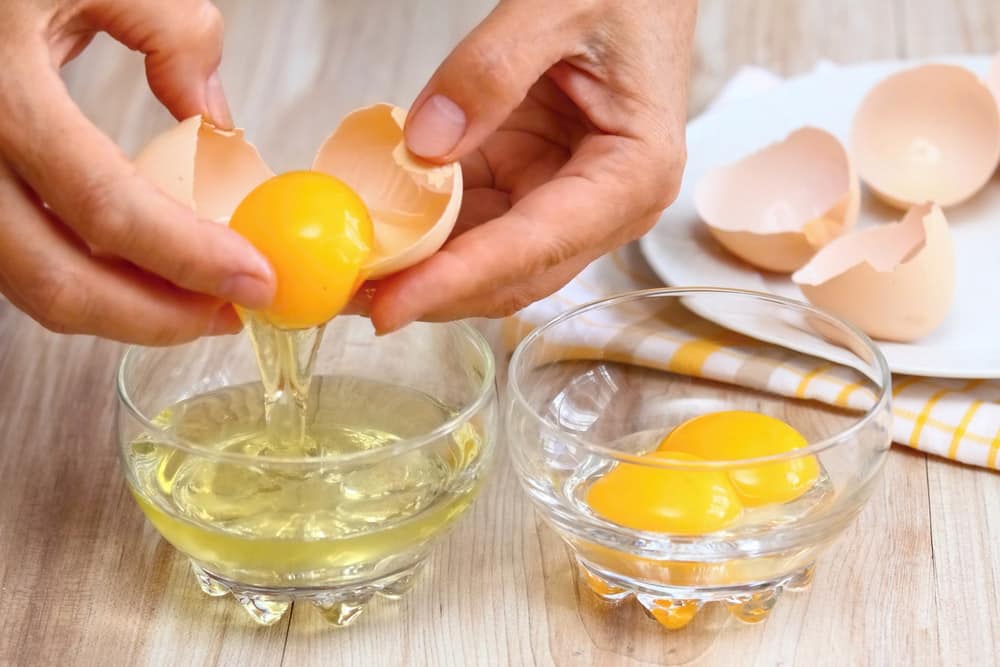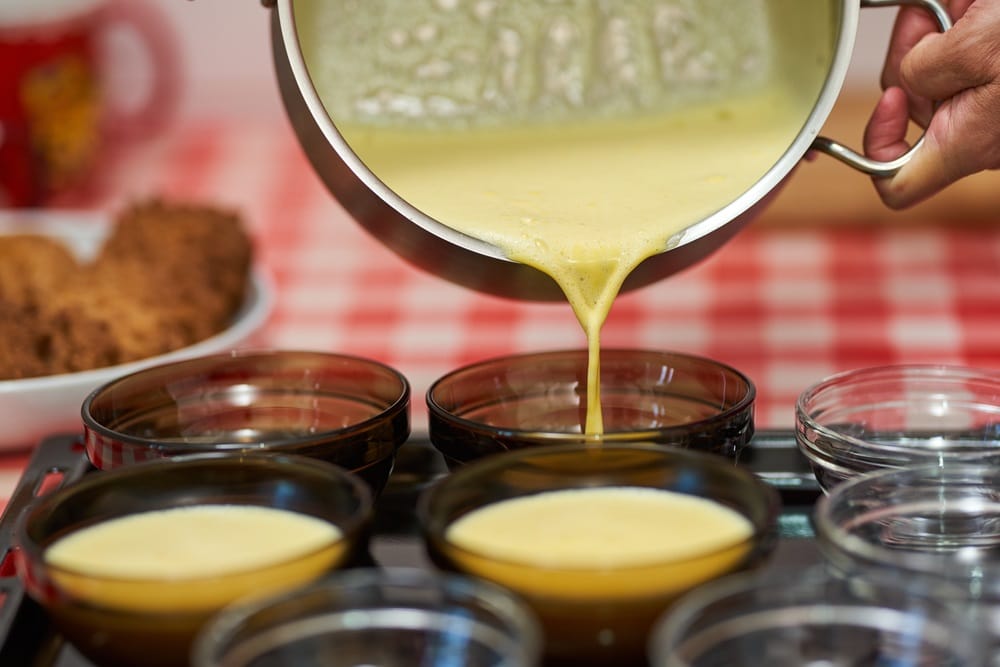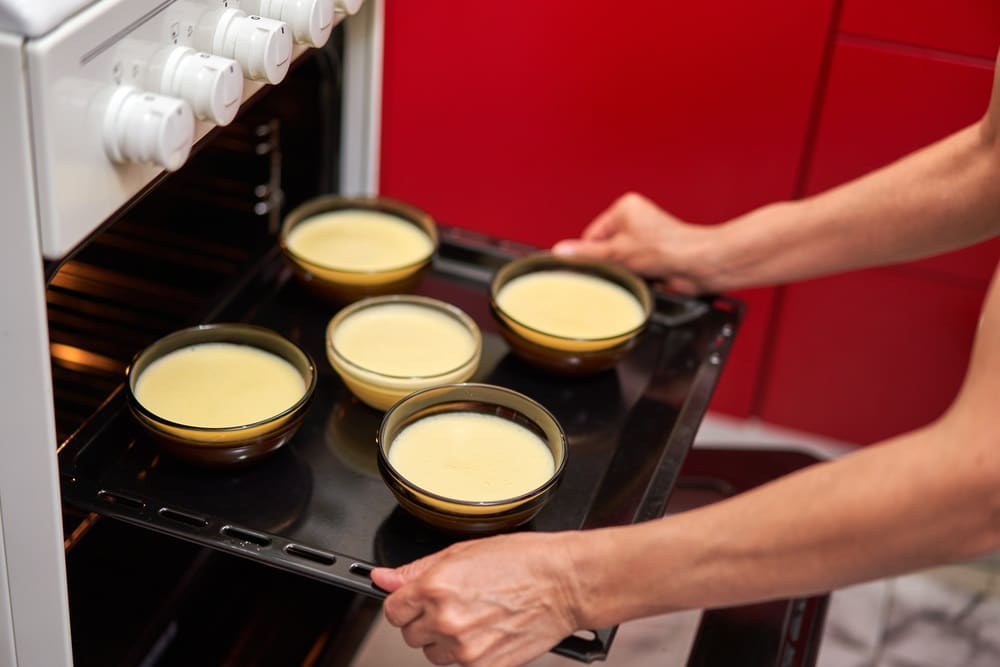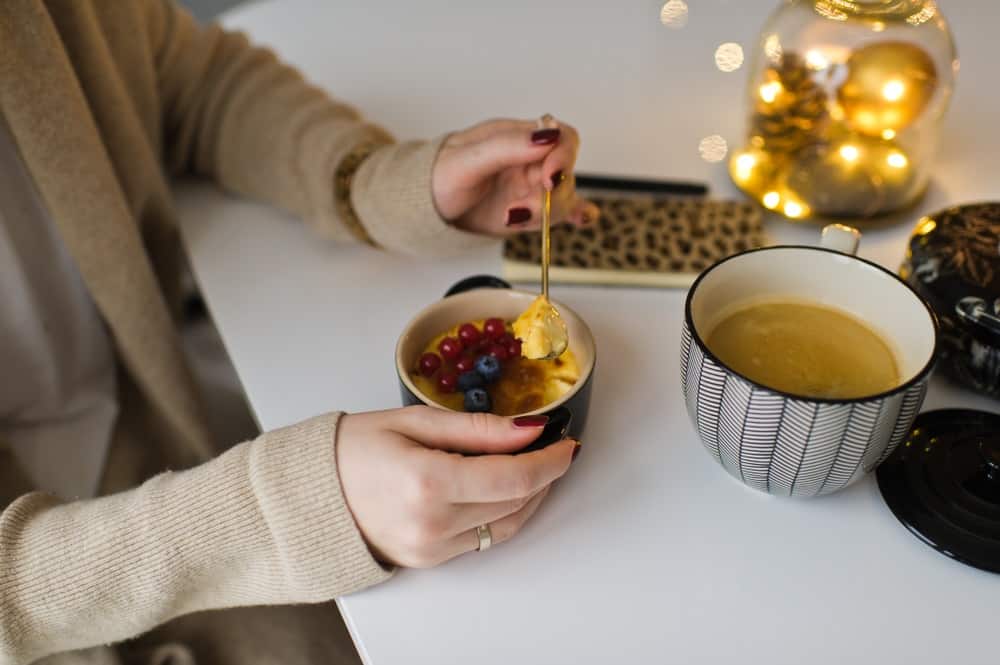
Crème brulee is also known as burnt cream or trinity cream. It is a classic dessert enjoyed by people all around the world.
The dish contains a rich, softly set vanilla custard on its base which is then topped with a layer of hardened caramelized sugar. This dessert is a part of French cuisine but its true origins are difficult to pinpoint.
The custard is prepared first, put into ramekins, baked, and chilled. Just before serving, the top is sprinkled with some sugar. The sugar is burnt, or caramelized, with a blowtorch or under a hot grill. This provides a crunchy, sweet element to the pudding.
While the traditional flavor for crème brulee is vanilla, alternatives have arisen such as coffee, white chocolate, or ginger.
Despite being a simple dessert in its ingredients, it does take a little skill to execute perfectly. One of the issues home cooks encounter is the custard not setting. We deal with this problem in this article, providing possible causes and four solutions.
Creme Brulee Not Setting
Crème brulee, when set correctly, should have a slightly wobbly yet thickened consistency. It should basically be thick custard. There are a few reasons why you may have run into this problem of it not setting.
Some involve the recipe itself and the proportion or ratio of ingredients to one another. Others involve the cooking and chilling processes.
1. Check the Cream and Egg Yolk Ratio
Let’s get started on what could have gone wrong. Crème brulee custard’s main ingredients are cream, egg yolks, sugar, and vanilla. Little else is needed.
The cream provides the base, the yolks serve to thicken it as they cook, and the sugar provides sweetness. The vanilla adds flavor.
The first thing that you should check is the ratio of egg yolks and cream in the recipe. If there aren’t enough yolks for the amount of cream, the custard will not set no matter how long you cook it.
While there are different recipes with different egg-to-cream ratios, we prefer one that calls for 6 egg yolks to 2-2 ½ cups of heavy cream.
While we’re dealing with the cream and eggs, do ensure that you use heavy cream, not thin half-and-half as it’s watery and may not set well. Use extra large or jumbo eggs, not small ones, to ensure you get enough yolk for setting the custard properly.
If you like a rough guide so that you can double or triple your quantity, use 3 egg yolks for every 1 cup of cream. If you only have small eggs, use 4 yolks for every cup of cream.
2. Cook the Custard Properly
Another problem that people can have when preparing crème brulee is that they do not cook it right resulting in it not setting smoothly. To prevent lumps, you need to use the correct technique when cooking the custard to prevent it from curdling.
First, heat the cream with your vanilla bean or extract and sugar. In a separate bowl, beat the egg yolks. Once the cream is at boiling point, pour it gradually onto the eggs, whisking all the time. This is very important.
The hot cream should never be poured all at once onto the yolks or it may “cook” the eggs, resulting in a lumpy scramble that will not set. Once everything has been combined into a smooth liquid, it can be strained and poured into your ramekins.
3. Cook It in the Oven for Long Enough
At this point, your crème brulee is in its ramekins but it is still not set. To set, it needs to be oven baked to cook the eggs. The oven should be preheated while you prepare the custard.
365 degrees Fahrenheit is a good temperature for baking the puddings. If the oven temperature is too low, it will not set the custards.
Put the ramekins into a roasting dish and fill it with water that reaches halfway up their sides. This will ensure even cooking and no splitting. Carefully slide the desserts into the oven and bake them for 35 to 40 minutes.
Take them out when the custard is set and wobbly. It will firm up a little more on cooling but it should not be runny. If it is, cook it for another 5 minutes then check it again.
The main cause of crème brulee not setting at this point is too short a cooking time. Even if the recipe says, “30 minutes”, this can vary due to oven makes, ingredient temperature, and more. So, give the desserts a little longer if they haven’t set yet.
4. Chill the Desserts before Serving
If you serve the brulees hot, they will not be properly set. The correct method is to cool them at room temperature once they have been cooked.
Then, cover them and put them in the fridge for at least 6 hours to chill and firm up properly. The sugary topping is made just before serving and provides a warm crunchy contrast to the chilled, creamy filling.
We hope this guide has helped you to troubleshoot why your crème brulee is not setting. Don’t give up as this luscious dessert is worth perfecting!



